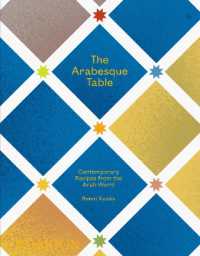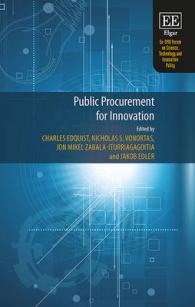基本説明
Examines the ideological assumptions embedded in the narrative and imagery of drug films, drawing on a sample of over one hundred films produced in Britain, Canada, and the U.S. from 1916 to 2005 whose focus is primarily on illegal drugs, trafficking, and their consequences.
Full Description
Drug prohibition emerged at the same time as the discovery of film, and their histories intersect in interesting ways. This book examines the ideological assumptions embedded in the narrative and imagery of one hundred fictional drug films produced in Britain, Canada, and the U.S. from 1912 to 2006, including Broken Blossoms, Reefer Madness, The Trip, Superfly, Withnail and I, Traffik, Traffic, Layer Cake, Harold and Kumar Go to White Castle, Trailer Park Boys, and more. Boyd focuses on past and contemporary illegal drug discourse about users, traffickers, drug treatment, and the intersection of criminal justice with counterculture, alternative, and stoner flicks. She provides a socio-historical and cultural criminological perspective, and an analysis of race, class and gender representations in illegal drug films.
This illuminating work will be an essential text for a wide range of students and scholars in the fields of criminology, sociology, media, gender and women's studies, drug studies, and cultural studies.
Contents
Introduction 1. Moral Regulation, Film Censorship, and Law 2. Illegal Drug Users and Addiction Narratives: The Early Film Years 3. The 60s On: Counterculture, Addiction-as-Disease, and Mandatory Treatment Narratives 4. Ruptures in Addiction Narratives: Pleasure, Harm Reduction, Consumer Culture, and Regulation 5. Drug Dealers: A Nation Under Siege 6. Vilified Women and Maternal Myths 7. Challenges to the Drug War: 1980 to 2006. Conclusion







